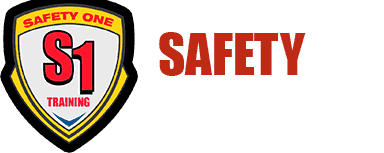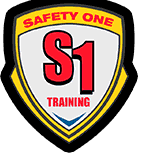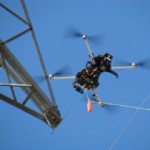10 Sep Drones: The Future of Safety
The Problem: First Man Up
Safety. Fall protection. Tower Climbing and Rope Access. This is what we do, and what we talk about. Even after a training class, you will often find myself and our instructors sitting and discussing the state of the industry, and solving the worlds problems. You know, normal office stuff. On one particular day, some instructors were discussing the new OSHA regulations 1910.269 requiring 100% attachment for all climbers in the utility industry by April 1, 2015. Oh the troubles that would be involved in trying to implement this plan. Bottom line is how best to attach a line up on the structure for everyone to attach to so they could climb safely 100% attached. The most common solution being a sole climber to set the initial line, the first man up.
A Drone Approach
As a hobby I have been flying fixed wing “drone” aircraft for the last 9 years. I simply put a camera on the top of the plane with a small transmitter and a receiver and small LCD monitor on the ground (or occasionally a pair of projection goggles). Great fun and the neighbors could never figure out how I managed to fly to of my line of sight. One of our Tower Climbing instructors shares the same hobby for remote control aircraft, and after discussing this over a few beers, we had the idea to use a helicopter drone to carry a P-line to the top of a tower and drop it down the center, then use it to pull up a specially rigged 3 part climbing rope. It took us 30 days to assemble the necessary accessories to a small off the shelf quadracopter drone. After first testing around live radio transmission towers we hooked the the extra electronics to stabilize it and have a remote dropable P-line. Then one afternoon we went out back and tested it on one of our training towers here at Safety One’s offices in Littleton. Amazing it worked!
Now Offering: Training, Consultation & Custom Drones
Well after months all the improvements and patents and building bigger and more powerful units, adding thermal cameras, now almost ready with a flyable UV camera etc etc etc here we are. Along the way we got key help and support and encouragement from WAPA, PG&E, and SCE without which we would not have made it. We will soon be presenting our findings and proposed written regulations with these groups to the FAA. We are also extremely proud to announce our first set of training courses for drone operators. Also we have some course descriptions for our course offerings here: Standard Flight Operations, Advanced Flight Operations and UAV / Drone Program Administration. The process of choosing the right machine, learning to fly correctly and safely is our goal, and we can help you avoid many of the pitfalls. Let our experiences help you make this leap smoother and easier. Bringing a new level of fall protection training to tower workers, this complements our existing programs in climber safety & rope access. We can discuss your situation and arrive at better solutions for you than ever before, including custom training and custom built drones specifically for your applications!
The Future:
If you told any of us that Safety One would be flying a custom built drone helicopter around live 350 kv lines a year ago we would have laughed. Now the big question we all ask where will we be a year from now?
Stay tuned for details!
Art Seely
President & CEO



Eagle Platforms
Posted at 22:44h, 13 JuneNice post and great to see drones being used is such a good way.
Choice Inspire
Posted at 03:30h, 04 NovemberAwesome blog!! I came across your blog, and here I gain valuable information about Training, Consultation & Custom Drones. Thanks for sharing.
Chris *****
Posted at 20:07h, 10 SeptemberGuys, I’m wondering what you might be able to offer with respect to advanced structural mapping for a tower structure. I’d like to see advanced LIDAR equipped on a UAV which would give us very detailed mapping capabilities on a structure. We are principally interested in a detailed solution which would allow us to generate a 3D point cloud of the scanned structure. We are seeking scanning capability with enough detail to confirm dimensional characteristics of the structure.